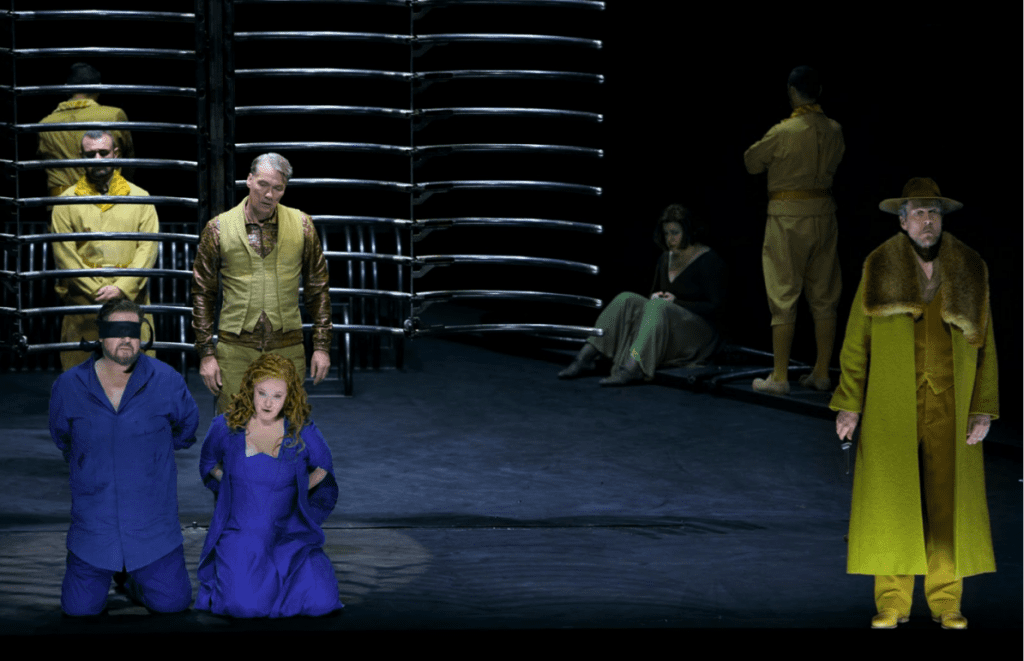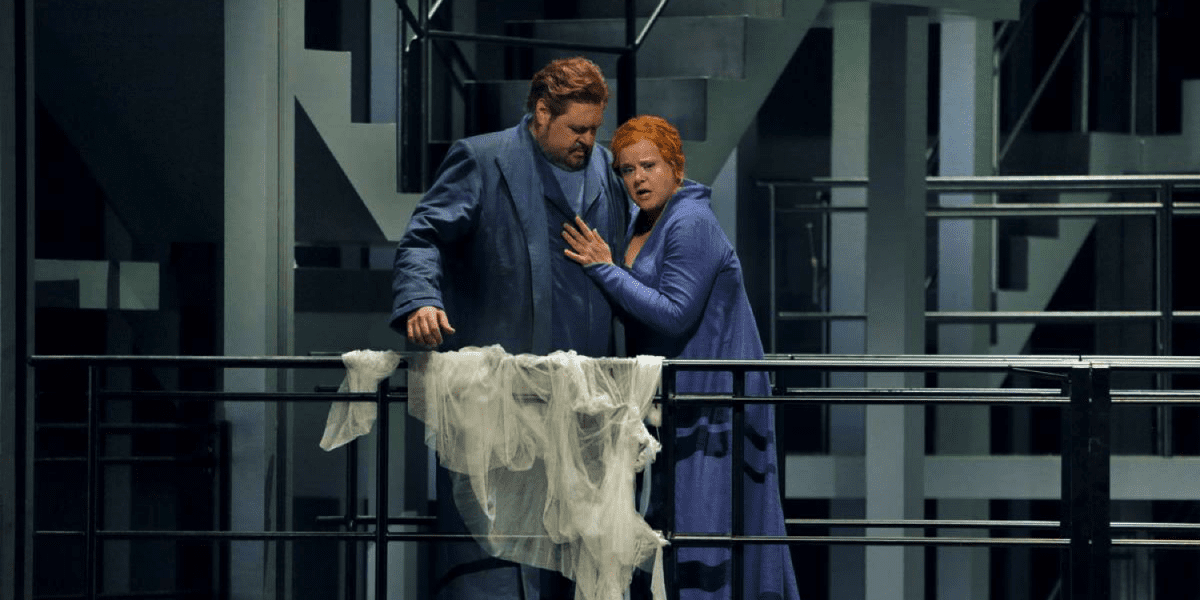Arguably, one of the greatest works ever written to pure erotic love echoing the legendary days of King Arthur, Tristan und Isolde is an emotional work to say the least and Katharina Wagner’s thoughtful and intelligent production (which ends its time on the Green Hill this year) quietly tapped into the opera’s emotional strength delivering a powerful production that drifted at times from its traditional staging.
A highly-impressive first act – not just musically but also visually – focused on the two lovers frantically searching for each other against all the odds with Kurwenal and Brangäne – magnificently sung by Greer Grimsley and Christa Mayer – struggling to keep them apart. When they eventually meet it proved an emotive scene. The lovers just stared longingly at each other in total silence while the love potion that Brangäne prepared for Isolde is immediately discarded by her and Tristan in a romantically-charged joint ceremony.
What makes this act so full of mystery is Frank Philipp Schlößmann and Matthias Lippert’s brilliantly-designed set comprising a three-dimensional labyrinth of stairs evaporating into thin air influenced, no doubt, by the work of Giovanni Piranesi or MC Escher but it was Piranesi’s engraving – Il ponte levatoio: Le Carceri d’Invenzione (The drawbridge: the Imaginary Prison) – cited in the programme. Thomas Kaiser’s strikingly-designed costumes ranged from medieval to futuristic styles while Reinhard Traub’s lighting reflected the dark and moody nature of the work but was seen to its best effect in the last act.
However, the scenario of Act II was extraordinary and played out in a prison exercise yard with more than a hint of DDR political interference surrounding the scenario as Stasi-styled guards (King Marke’s henchmen in this case) checked the lovers forced into a tiny cell with round-the-clock surveillance by piercing-bright searchlights constantly trained upon them. Eventually, Tristan, blindfolded, is stabbed in the back by Melot, the role so notably sung by Raimund Nolte. Was he carrying out King Marke’s orders or secretly jealous of Tristan’s relationship with Isolde?

In the final act, the staging is atmospheric and cloaked in a thin hazy bluish-grey mist with the tension rising to breaking-point as Tristan tries in vain to reach out to his beloved Isolde one last time by seeking her through a series of triangular mirrors representing, possibly, the romantic love triangle.
The casting was excellent with a formidable trio of Wagner heavyweights taking the main roles. Stefan Vinke (Tristan), Petra Lang (Isolde) and Georg Zeppenfeld (King Marke). In fact, Ms Lang was picked and coached for her part – one of the most demanding of all Wagnerian female roles – by Bayreuth’s dynamic music director, Christian Thielemann. Her performance, especially in the ‘Liebesnacht’ – that great love-duet with Tristan towards the end of Act II – was brilliantly sung. Could you get better? I doubt it!
The traditional ending was skilfully reinterpreted by Ms Wagner as during the rendering of the ‘Liebestod’ (delivered by Ms Lang in a stand-alone performance) King Marke steps in towards the final bars, drags the body of Isolde, very much alive it seems but, maybe, an apparition, across a bare stage, claiming his rightful bride kidnapped by his nephew. A sting in the tail!
Maestro Thielemann was on top form (really, he’s never far away from it) tackling the score with verve and gusto getting from his charges in the pit some rich, imaginative and warm playing.

